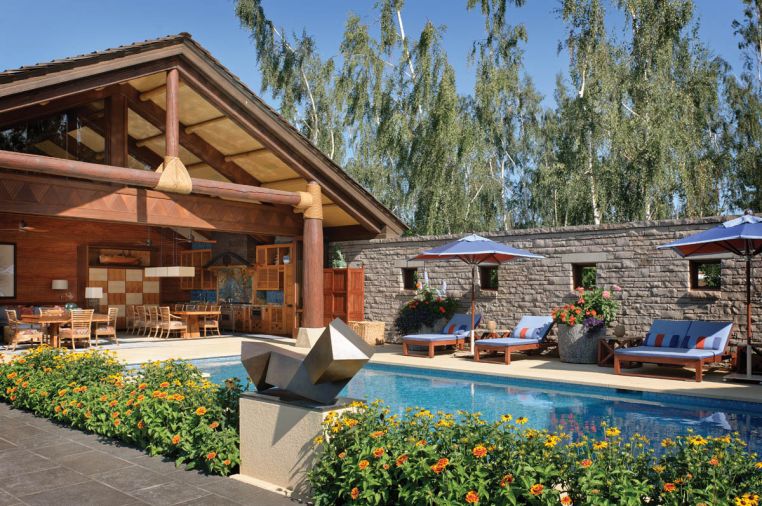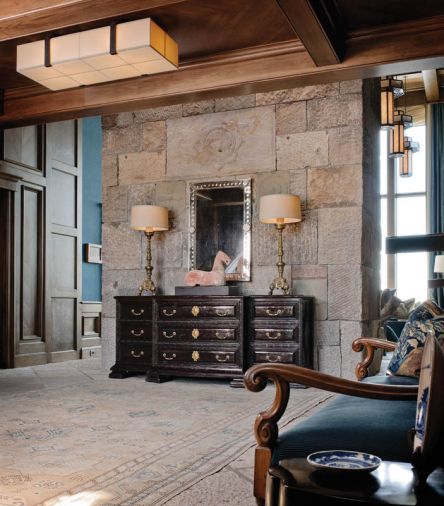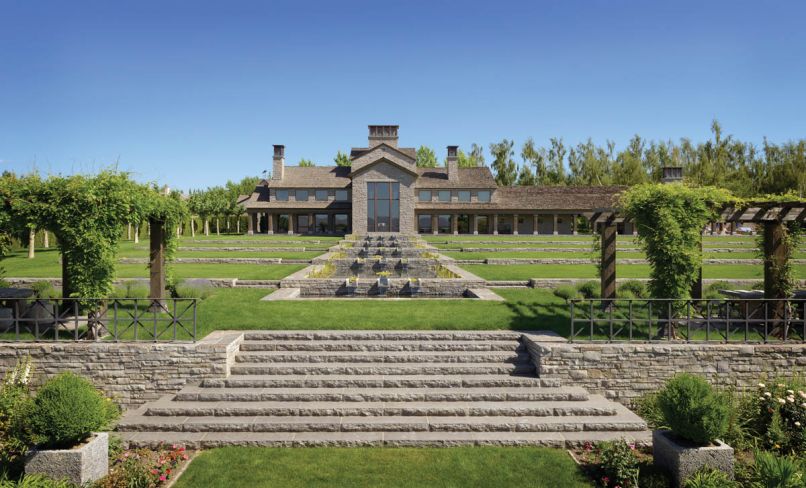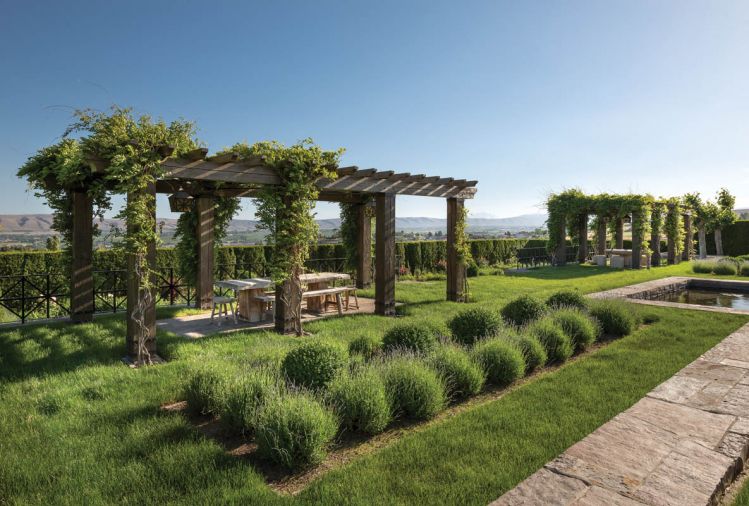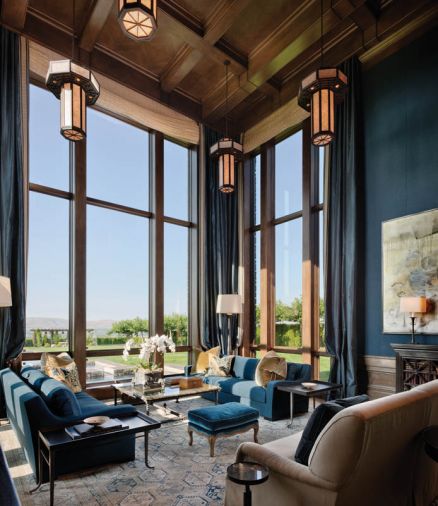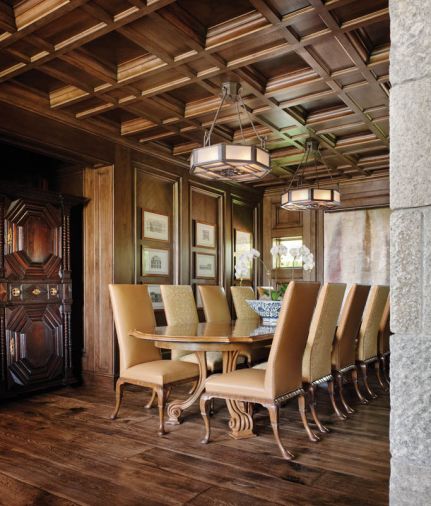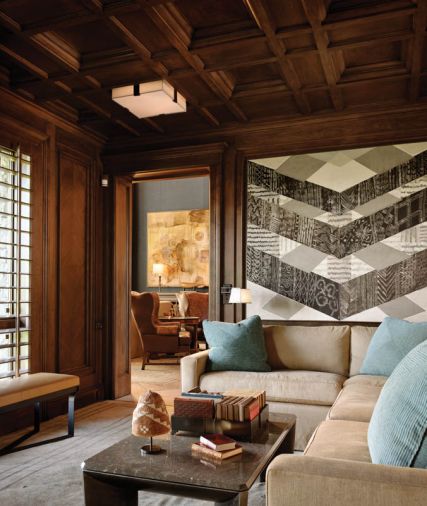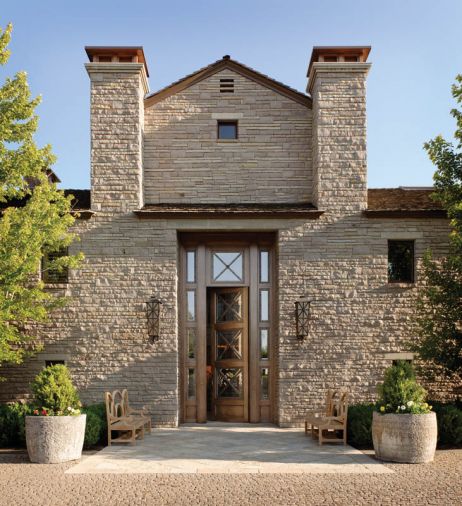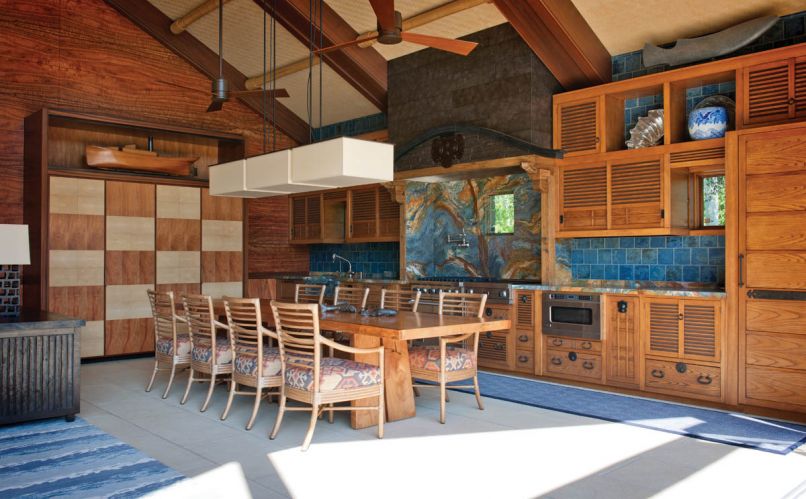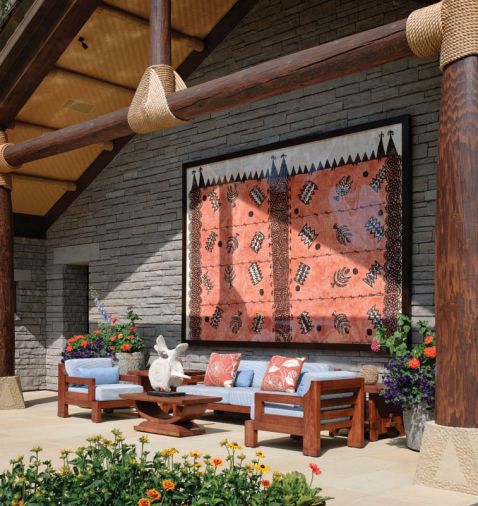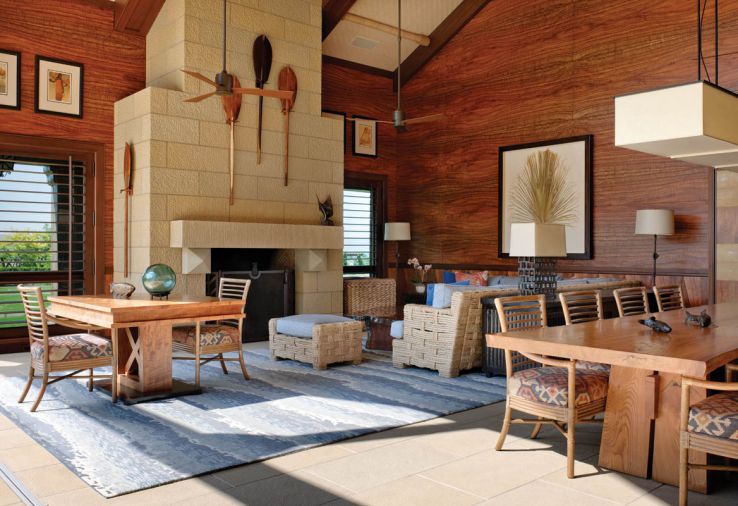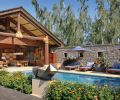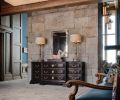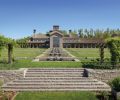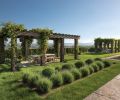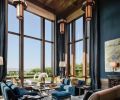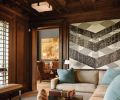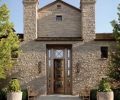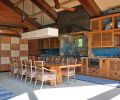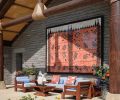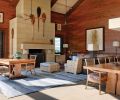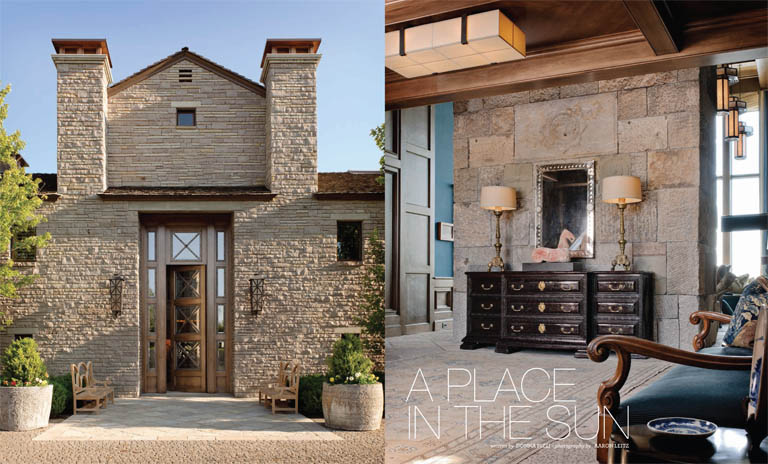When Seattle interior designer Doug Rasar was asked to help with the monumental renovation that would turn his long-time clients’ former Washington wine country home with contemporary interiors into an estate with more traditional sensibilities and a colorful Hawaiian style cabana, he took the job.
“They once called me their quarterback,” recalls Rasar, referring to his job of coordinating with architects, contractor and numerous subs in addition to his design work. “The house was originally designed by a very well-known San Francisco architect. This time, however, the owners wanted to use as many ‘Local Favorite Sons’ as possible. They, therefore, engaged Rod Knipper of KDF Architects of Yakima, who became the primary architect on the project.”
“We conceptualized the interiors,” says Knipper, “including the stone arrangement of the entry, and fireplace, living room panels, staircase, bridge to the upstairs bedrooms, and master shower, as well as creating a theater out of a low attic space.”
“The footprint of the house didn’t change, however,” explains Rasar. “While the rest of the world is wanting blackened steel and Venetian plaster walls, they had already lived with that for 20 years. So, they wanted something more timeless and traditional.
”The entire estate was transformed by adding a carriage house at the end of the driveway, symmetrical arbors, reflecting pools, and the removal of the large porte cochere that dwarfed the original small entry door.
“The porte cochere was very distracting from the overall classic look of the house,” says Knipper, who also interfaced with the landscape architect to create the design for the reflecting pools seen from the newly widened two story copper clad living room windows.
Richard Rhodes, founder of Rhodes Architectural Stone in Seattle, procured the stone relics, dating from 600-2000 years old, used in the granite floor tiles, and relic fireplace, which also features “Antique Yangtze Limestone”. Rhodes, a former actor turned stone mason, spent seven years, from 1999-2006, negotiating with the Chinese Army, local officials and villagers to rescue the granite roadways, and limestone from 17 villages that would soon be lost forever, owing to the flooding of the Yangtze River for The Three Gorges Dam project.
Given the vastness of the project, Rasar recommended Jim Romano of Conard Romano in Seattle to work with KDF on some of the interior detailing.
“Our involvement began after the concept had been more or less determined for the overall scope of the work. The home was completely gutted at that point. There were elements of interior configuration, but no details pulling the spirit together,” says Romano. “Rod at KDF was the prime architect, whose work I completely respect. Doug and Josh Sevigny of Artisan, Inc. are both great. It was all about collaboration - what each team could bring to the project - which was very successful.”
Romano designed the new 14’, 1,500 pound entry door, which took several men to install.
“NorthStar Woodworks of Bellingham built it,” says Romano. “They brought in craftsmen from other trades as well to help engineer it. The whole door pull mechanism was custom designed and cast by local tradesman. NorthStar then coordinated putting it together.”
Rasar’s interiors feature a rich, dark palette that began with the homeowners’ love for blue.
“Everything blue came from the two rugs we found in Los Angeles that are on either side of the enormous limestone fireplace,” says Rasar. Coordinating the blue in the living room with that found in the adjacent sitting room was key. Native American artist, Leo Adams’ striking chevron adds contrast. Lighting designer Brian Hood helped Rasar with his custom designs and fixture selection.
Rasar calls an extraordinary armoire found in New York at Amy Perlin Antiques “a killer piece.”
There were several unique directives from the homeowners that helped to drive the architectural detailing and interior design, including the edict: “no recessed lighting.”
“Normally, in Seattle,” says Rasar, “it is a priority to find light either by facing the house south to get as much light as possible, or via sky lights, etc. This area of Washington is very different from Seattle with intense light year round, which influenced the color palette, and decorative light fixture design.”
To avoid using recessed cans in the ceiling, Rasar incorporated them into the custom living room fixtures, and then directed the light toward artwork or other elements of the design.
An intense period of demolition was required to gut the home and install the complex heating and water systems throughout the house. “We built a tunnel from one end of the house to the other, and used an excavator to haul out the concrete and gravel,” says Sevigny. Following the owner’s desire to keep the home at an even 70 degrees, Sevigny installed 18 dampers to the various zones of the house, and with the extensive gutting, eventually wound up reframing the whole interior.
“One of the great aspects of this project,” says Romano, “was the tremendous commitment to design the owners made and their active engagement throughout the process.”
Knipper agrees. “Both owners had good design ideas and were always on top of things. They were also exceptional at reading and understanding architectural drawings, and enjoyed being involved in the selection of materials, mockups, and even the placement of engraved antique rocks.”
“I did some of the overall concept sketches for the cabana,” recalls Knipper, “noting which material should go where. Doug put it all together, including designing the cabinets.”
“The cabinets near the stove,” says Rasar, “are fir, made from trees similar to the fir found in Japan. The panels are keyaki, a Japanese figurative wood.” Authentic Japanese hardware and Shoji type doors give it a Pacific Rim look.
The fireplace is made up of pineapple textured stone from China, chosen in a range of soft colors. The plinths beneath the pencil columns were designed and cut in China. The large block limestone flooring echoes that found in the main house.
Rasar designed the game table so that with the push of a button, from as far away as the sectional, the table top pops up to reveal the TV. “Too small to be noticed in a photo,” adds Rasar, “are the tiny tile petro glyphs from Hawaii’s First People: a pregnant woman, a fisherman, etc. The hammered black metal stove hood features a medallion and antique brackets from Japan
Collectible cabana items include Hawaiian Koa paddles, and framed vintage Royal Hawaiian Hotel menus with artwork by artist John Kelly. During the hotel’s heyday, it issued different menus for each day of the week.
The cabana’s pièce de résistance are its Koa walls with center matched seams. “Steve Stusser of Stusser Woodworks, who installed the woodwork, was very possessive of this wood,” says Knipper. “He cut the leftover pieces in a triangular pattern, inverted top-to-bottom for the wainscoting, without wasting a single piece!”
Knipper says, “The whole experience, which lasted two to three years, was action packed. We made lots of full-sized mock-ups supplied by the contractors, who built them and brought them to the site from around the world.”
Sevigny recalls a few “exciting” moments - like pouring 3 yards of concrete weighing 12,000 lbs for the living room concrete chimney cap while being 45’ off the ground. Or taking 30 corn cob blasted 16’ x 16’ dead standing fir posts and setting them on a thermaled stone base, and then sliding the nearly 700 lb. posts with their bases, one-by-one, under the existing shored roof.
“It was a fun project in terms of design,” adds Romano. “When it was all said and done, it came together like a symphony of pieces, which I take back to the clients, who graciously allowed this project to be created, and to Doug Rasar, who held it all together like glue.”
“In a heart beat, given the chance to work with anyone who was on this team,” adds Rasar, “I would do it again, no question.”
PROJECT SOURCES
CONTRACTOR: Artisan Inc. artisaninc.com
PRIMARY ARCHITECT: KDF Architecture kdfarchitecture.com
ARCHITECT: Conard Romano Architects conardromano.com
INTERIOR DESIGN: Doug Rasar Interior Design rasarinteriors.com
RUGS: Driscoll Robbins Fine Carpets driscollrobbins.com
LANDSCAPE ARCHITECT: Allworth Design allworthdesign.com
PLUMBING FIXTURES: Kohler Signature Store by Keller Supply kohlersignaturestoreseattle.com
STONE FROM CHINA: Richard Rhodes now of Rhodesworks Design Studio rhodesworksdesign.com
OKLAHOMA STONE: Ibison Stone Supply ibisonstonesupply.com

